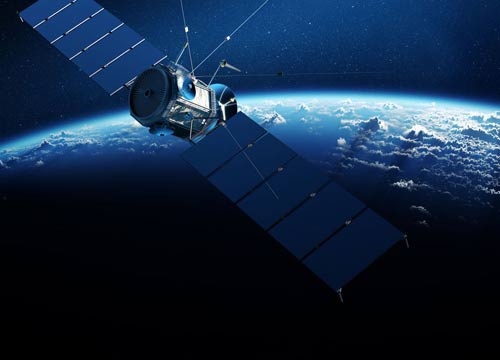artificial satellite

An artificial satellite is a human-made object placed in orbit around Earth or some other celestial body. The first such object, Sputnik 1, was launched by the Soviet Union on 4 October 1957. Since then, thousands of other artificial satellites have been launched to serve a multiplicity of purposes from scientific investigation to communications and covert surveillance.
Antisatellite
An antisatellite (ASAT) is a satellite or other device whose purpose is to disable an enemy satellite. The method used could involve the physical destruction of the satellite or interference with its communications or power systems.
Communications satellite
Early warning satellite
An early warning (EW) satellite is a military spacecraft used to detect the launch of missiles and rockets from Earth's surface. Information from these satellites would provide first alert of the start of a major missile attack, and is used to track the long-term patterns of foreign nations' space programs.
Earth observation satellites
An Earth observation satellite is a satellite designed to observe Earth's surface and atmosphere from orbit. Included in this category are Earth resources satellites, weather satellites, geodesy satellites, and, for military and intelligence applications, reconnaissance satellites.
Earth resources satellites
Earth resources satellites are unmanned orbiting spacecraft that collect information about Earth's atmosphere, land, and oceans for scientific research and resource management. They fall into the more general category of Earth observation satellite.
Geodesy satellite
A geodesy satellite is a type of Earth observation satellite used to measure the location of points on Earth's surface with great accuracy. Their observations help to determine the exact size and shape of Earth, act as references for mapping, and track movements of Earth's crust.
Navigation satellites
Navigation satellites are spacecraft that are designed to assist in air, land, and oceanic navigation. They include satellites such as Transit, NAVSTAR, and GLONASS. Navigation satellites were developed in the 1950s and rely on the Doppler effect to calculate the position of vessels emitting a radio signal.
Nuclear detection satellite
Nuclear detection satellites are spacecraft designed to detect nuclear explosions on the ground or in the atmosphere. Although primarily intended to monitor nuclear treaty compliance, these satellites have also been used to detect and observe galactic events, such as supernovae.
Reconnaissance satellite
A reconnaissance satellite, also known as a recon sat or spy satellite, is an Earth observation satellite or communications satellite that is used for military or intelligence operations.
Remote sensing satellite
A remote sending satellite is a satellite that performs remote sensing from space. Remote sensing satellites generally monitor important resources for humans. For example, they might be used to track animal migration, locate mineral deposits, watch agricultural crops for weather damage, or see how fast the forests are being cut down. Because they are in space, remote sensing satellites are ideal for monitoring areas with harsh climates or difficult terrains.
Surveillance satellite
A surveillance satellite is a military spacecraft that provides reconnaissance data in the form of high-resolution visible, infrared, or radar imagery.


